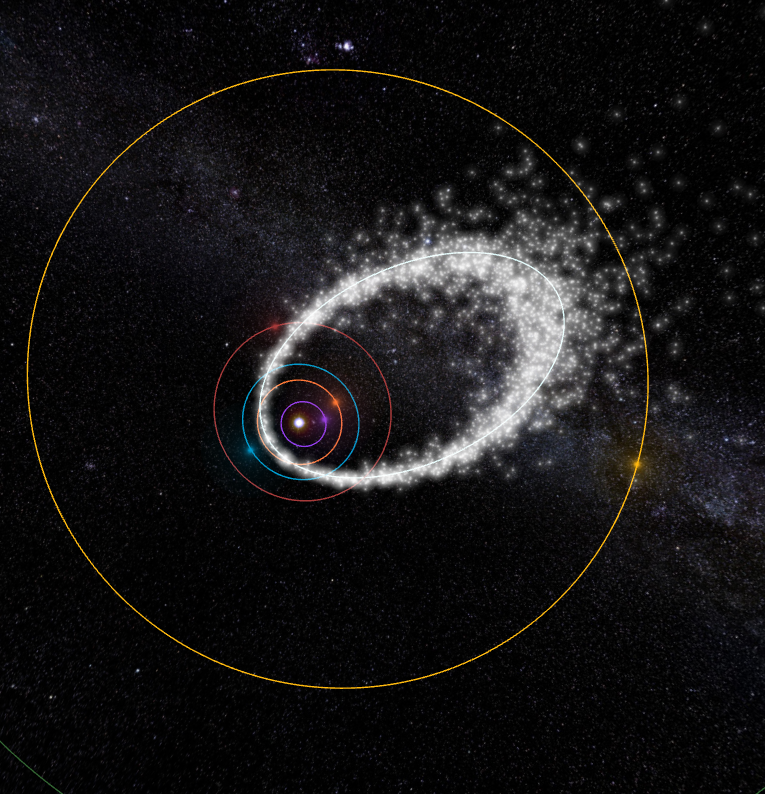Late July Meteor Showers: Viewing Guide And Predictions

Welcome to your ultimate source for breaking news, trending updates, and in-depth stories from around the world. Whether it's politics, technology, entertainment, sports, or lifestyle, we bring you real-time updates that keep you informed and ahead of the curve.
Our team works tirelessly to ensure you never miss a moment. From the latest developments in global events to the most talked-about topics on social media, our news platform is designed to deliver accurate and timely information, all in one place.
Stay in the know and join thousands of readers who trust us for reliable, up-to-date content. Explore our expertly curated articles and dive deeper into the stories that matter to you. Visit Best Website now and be part of the conversation. Don't miss out on the headlines that shape our world!
Table of Contents
Late July Meteor Showers: Your Guide to Witnessing the Perseids' Prelude
Summer nights offer a celestial spectacle, and late July brings a prelude to the dazzling Perseid meteor shower: the Southern Delta Aquariids and the Alpha Capricornids. While not as prolific as their August counterpart, these meteor showers offer a chance to catch some shooting stars before the Perseids peak, making them a fantastic opportunity for amateur astronomers and stargazers alike. This viewing guide will provide you with everything you need to know to maximize your chances of witnessing these beautiful displays.
Understanding the Southern Delta Aquariids and Alpha Capricornids
The Southern Delta Aquariids, active from mid-July to mid-August, are known for their long, slow streaks across the night sky. Their radiant point – the area of the sky from which they appear to originate – lies in the constellation Aquarius. This shower's peak typically falls around July 28-29, offering potentially up to 25 meteors per hour under ideal conditions.
The Alpha Capricornids, active from mid-July to mid-August, are less prolific than the Delta Aquariids, producing only around 5 meteors per hour at their peak. However, they are known for producing bright fireballs – exceptionally luminous meteors – making them a rewarding shower to observe. Their radiant point is located in the constellation Capricornus. The peak for the Alpha Capricornids is usually around July 30-31.
Tips for Optimal Meteor Shower Viewing
To get the most out of your late July meteor shower viewing experience, follow these tips:
- Find a Dark Location: Light pollution significantly reduces visibility. Escape city lights and find a location with dark skies, ideally away from streetlights and other sources of artificial illumination. Consider visiting a designated dark sky park for the best experience. [Link to a website listing dark sky parks]
- Be Patient: Meteor showers are a waiting game. Give your eyes at least 20-30 minutes to adjust to the darkness. Avoid looking at your phone or other bright devices during this time.
- Bring a Blanket or Chair: You'll be looking upwards for extended periods, so comfort is key. A reclining chair or a comfortable blanket is recommended.
- Check the Weather Forecast: Clear skies are essential for meteor shower viewing. Check the weather forecast before heading out and be prepared to reschedule if necessary.
- Use a Meteor Shower App: Several apps can help you locate the radiant points of the showers and predict meteor activity. These apps can also provide real-time information about cloud cover and light pollution in your area. [Link to a popular meteor shower app]
- Know Your Constellations: Familiarizing yourself with the constellations Aquarius and Capricornus will help you locate the radiant points and better track the meteors as they streak across the sky. Online resources and stargazing apps can be helpful in this regard.
Predictions for Late July 2024
While precise predictions are difficult, based on historical data, we can anticipate:
- Southern Delta Aquariids Peak: Around July 28-29, with a potential zenithal hourly rate (ZHR) of up to 25 meteors per hour.
- Alpha Capricornids Peak: Around July 30-31, with a ZHR of around 5 meteors per hour, but with a higher chance of bright fireballs.
Conclusion:
Late July offers a fantastic opportunity to witness the celestial fireworks of the Southern Delta Aquariids and Alpha Capricornids. By following these tips and being patient, you'll significantly increase your chances of enjoying a memorable night under the stars. So, grab your blanket, find a dark spot, and prepare to be amazed! Don't forget to share your photos and experiences on social media using #LateJulyMeteors!

Thank you for visiting our website, your trusted source for the latest updates and in-depth coverage on Late July Meteor Showers: Viewing Guide And Predictions. We're committed to keeping you informed with timely and accurate information to meet your curiosity and needs.
If you have any questions, suggestions, or feedback, we'd love to hear from you. Your insights are valuable to us and help us improve to serve you better. Feel free to reach out through our contact page.
Don't forget to bookmark our website and check back regularly for the latest headlines and trending topics. See you next time, and thank you for being part of our growing community!
Featured Posts
-
 Palous Eighth Victory A Championship Deciding Moment
Jul 29, 2025
Palous Eighth Victory A Championship Deciding Moment
Jul 29, 2025 -
 Nyc Transit Union To Sue Curtis Sliwa Over Defamatory Remarks
Jul 29, 2025
Nyc Transit Union To Sue Curtis Sliwa Over Defamatory Remarks
Jul 29, 2025 -
 Brewers Leadoff Hitters Return Impact On Saturdays Game Against Marlins
Jul 29, 2025
Brewers Leadoff Hitters Return Impact On Saturdays Game Against Marlins
Jul 29, 2025 -
 Curtis Sliwa Accused Of Defamation By Transport Workers Union Horse Abuse Controversy
Jul 29, 2025
Curtis Sliwa Accused Of Defamation By Transport Workers Union Horse Abuse Controversy
Jul 29, 2025 -
 We Are D3 Advances To Tbt 2025 Semifinals After Quarterfinal Win
Jul 29, 2025
We Are D3 Advances To Tbt 2025 Semifinals After Quarterfinal Win
Jul 29, 2025
Latest Posts
-
 Breaking Down The Edward Cabrera Trade Rumors Whats Next For The Astros
Jul 31, 2025
Breaking Down The Edward Cabrera Trade Rumors Whats Next For The Astros
Jul 31, 2025 -
 Countdown Counters Steamy Amber Mark Scene A Shocking Cliffhanger
Jul 31, 2025
Countdown Counters Steamy Amber Mark Scene A Shocking Cliffhanger
Jul 31, 2025 -
 Exclusive Jensen Ackles And Derek Haas Discuss Spoiler S Fate And The Shows Slow Burn
Jul 31, 2025
Exclusive Jensen Ackles And Derek Haas Discuss Spoiler S Fate And The Shows Slow Burn
Jul 31, 2025 -
 India Vix Gauging Investor Fear And Market Volatility
Jul 31, 2025
India Vix Gauging Investor Fear And Market Volatility
Jul 31, 2025 -
 Intentional Wreck Costs Austin Hill Nascar Issues One Race Suspension
Jul 31, 2025
Intentional Wreck Costs Austin Hill Nascar Issues One Race Suspension
Jul 31, 2025
